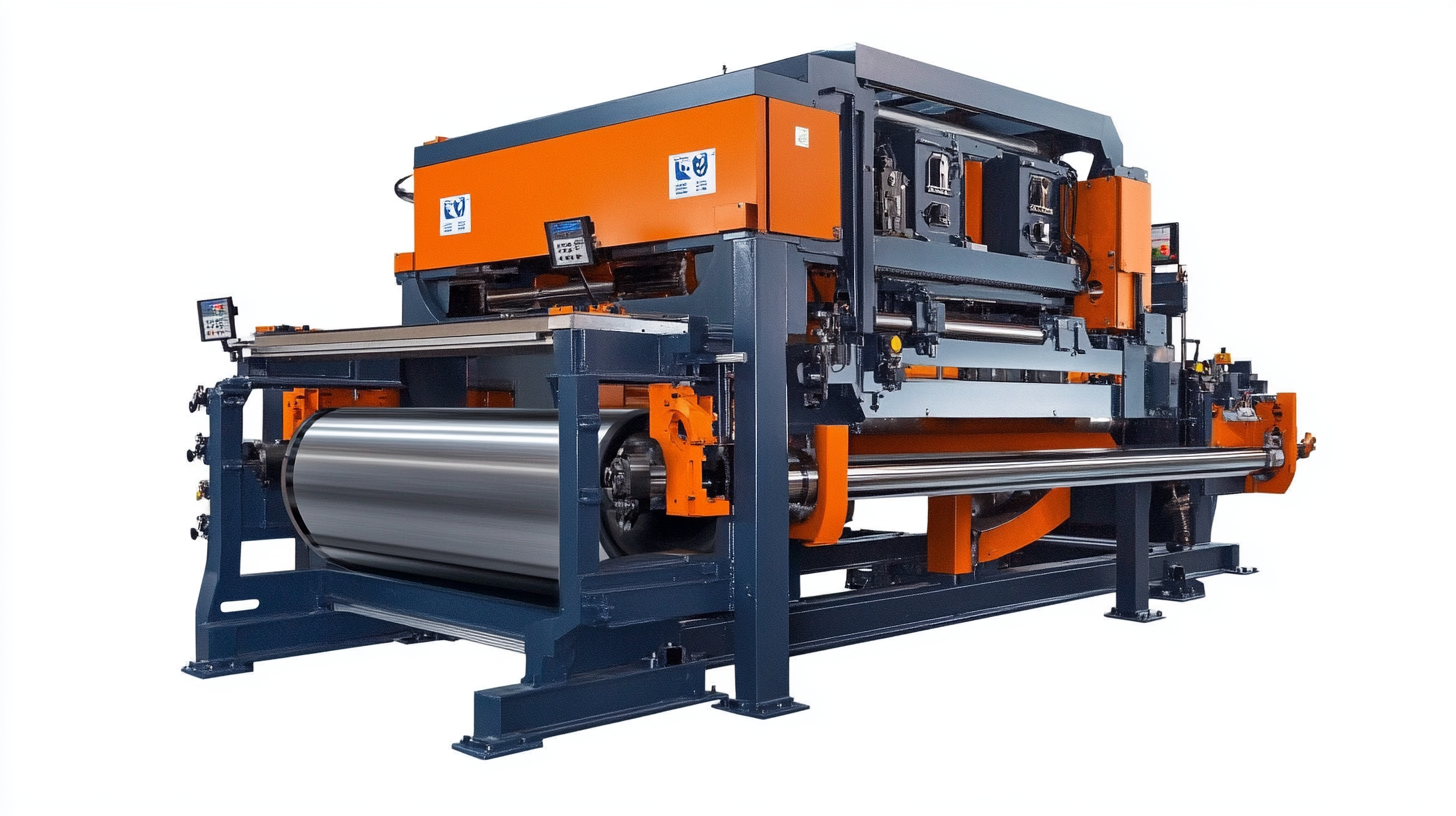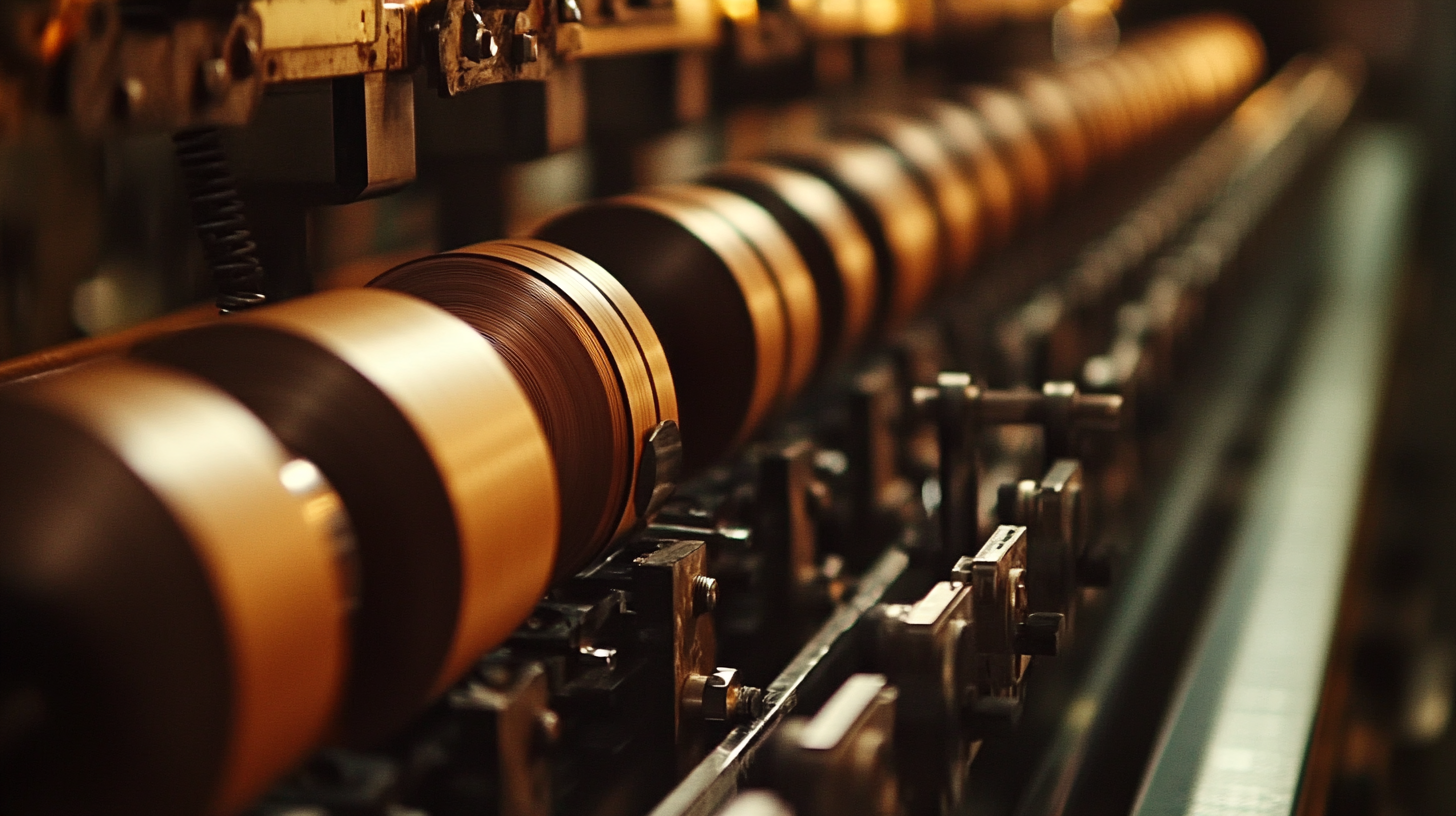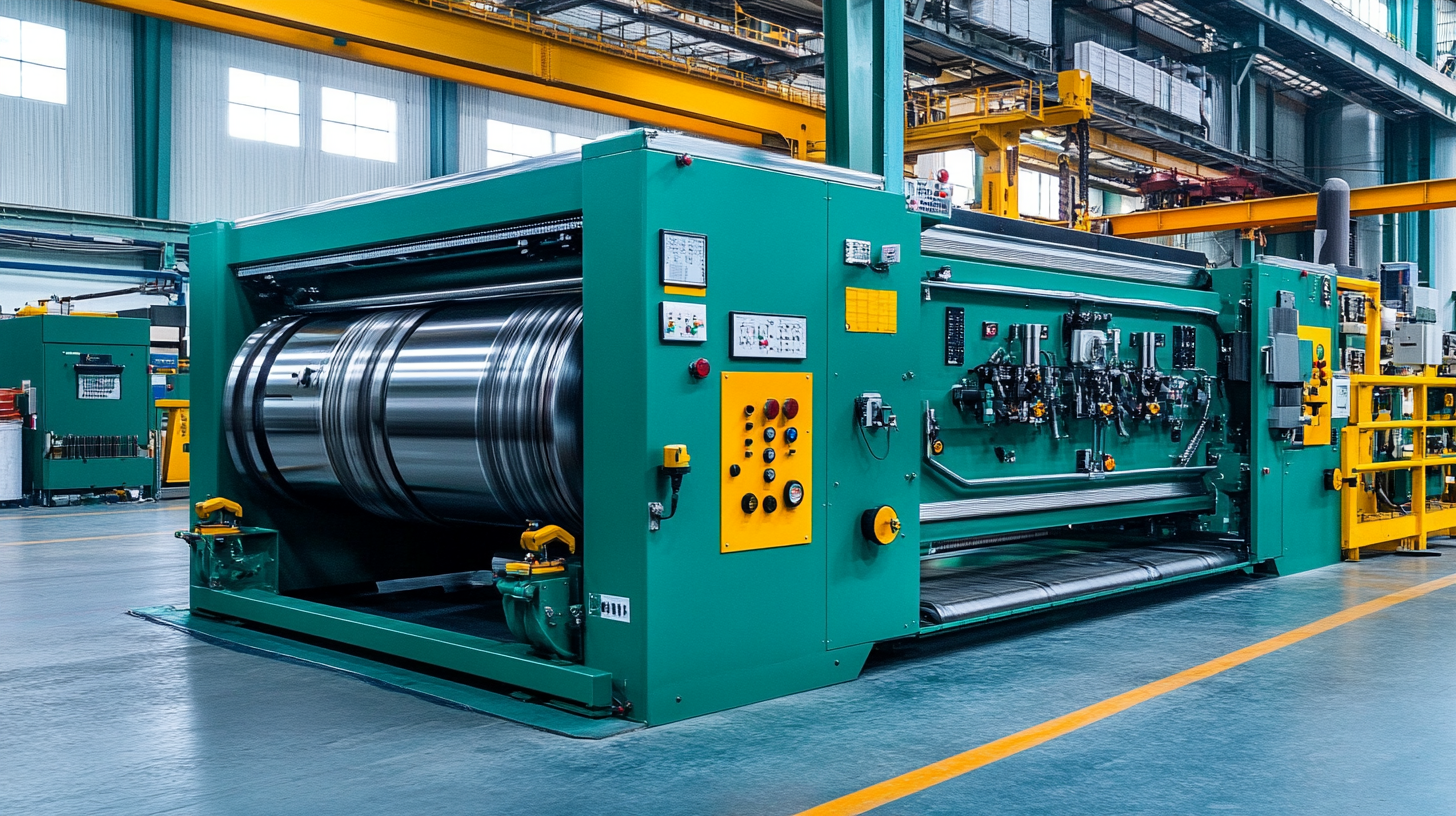Leave Your Message
In the fast-evolving landscape of manufacturing, the efficiency and quality of production lines are paramount. One of the critical components that can significantly enhance productivity is the Integrated Calendering and Slitting Machine. This advanced technology merges calendering and slitting processes into a single, cohesive unit, streamlining operations while maintaining superior output standards. Choosing the right Integrated Calendering and Slitting Machine is essential for manufacturers aiming to optimize their workflow and elevate their product quality. However, with various options available in the market, the selection process can be daunting. In this ultimate guide, we will delve into the essential factors to consider when selecting an Integrated Calendering and Slitting Machine for your production line, ensuring that you make an informed decision that aligns with your operational goals and product specifications.

When choosing an integrated calendering and slitting machine for your production line, it's essential to understand the underlying technology and features that enhance performance. Integrated calendering machines combine various functionalities, such as rubber and plastic processing, to produce consistent and high-quality materials. At the heart of these machines is an advanced hydraulic and control system, which significantly improves precision and stability during operation. This technological advancement allows for precise adjustments and consistent output, resulting in a reliable production process.
In recent developments, manufacturers are focusing on optimizing the efficiency of their calendering machinery. The introduction of advanced hydraulic systems is revolutionizing how calendering tasks are approached. By utilizing more accurate and responsive controls, production lines can reduce waste and enhance material quality. As companies invest in new machines, understanding these improvements is crucial for selecting the right equipment for your specific needs. Whether you are upgrading existing machinery or investing in new solutions, grasping the basics of integrated calendering and slitting machines will set your production line on the path to success.
| Feature | Importance | Considerations |
|---|---|---|
| Machine Size | Critical | Ensure it fits your production space. |
| Material Compatibility | High | Check which materials can be processed. |
| Production Speed | High | Match speed with your production requirements. |
| Energy Efficiency | Moderate | Consider operational costs. |
| Ease of Maintenance | Important | Look for machines with accessible parts. |
| Cost | Very Important | Stay within your budget while ensuring quality. |
| Vendor Support | Essential | Ensure good after-sales service. |
When selecting an integrated calendering and slitting machine for your production line, several key factors must be considered to ensure optimal performance and efficiency. Firstly, evaluating the machine's specifications and capabilities is crucial. This includes examining the material compatibility, processing speed, and the thickness of the materials it can handle. A machine that can accommodate a wider range of materials and sizes will provide greater versatility, allowing for more diverse production opportunities.
Another important factor is the technology utilized in the machine. Modern machines often come with advanced features such as automatic tension control and digital monitoring systems that enhance precision and reduce downtime. It is essential to assess whether these technological advancements align with the specific needs of your production line, as they can significantly influence productivity and operational efficiency.
Lastly, consider the after-sales support and maintenance services offered by the manufacturer. A reliable support system can mitigate potential issues and ensure that your machine remains in optimal condition over time. Investing in a machine with robust customer service and maintenance options can lead to smoother operations and ultimately a better return on investment for your production line.
When selecting the right integrated calendering and slitting machine for your production line, it is crucial to compare the various types available on the market. According to a recent market analysis by Grand View Research, the global calendering machine market is projected to reach USD 3.5 billion by 2025, driven by advancements in technology and an increasing demand for high-performance materials. Understanding the specifics of each machine type can significantly influence production efficiency and product quality.
There are several types of calendering machines, including three-roll, four-roll, and rubber calenders, each catering to specific manufacturing needs. For instance, three-roll calenders are often preferred for applications requiring precise thickness control, while four-roll variants offer enhanced uniformity in material processing. Similarly, slitting machines vary in configuration, with rotary slitting being a popular choice for high-speed operations, as it allows for faster cuts and less waste. A study by Technavio indicates that the demand for automated slitting machines is on the rise, with an expected growth rate of 7% annually over the next five years, highlighting the industry’s shift toward automation and efficiency.
Incorporating intelligent features such as digital monitoring and adjustment systems in these machines can further improve productivity. The International Journal of Advanced Manufacturing Technology reports that manufacturers adopting automated systems have reported efficiency gains of up to 30%. As the market continues to evolve, choosing the right type of calendering and slitting machine will be vital for maintaining competitive advantage and achieving operational excellence.

Integrating calendering and slitting machines into your production line can significantly enhance your workflow efficiency. First and foremost, it's essential to assess the compatibility of these machines with your existing setup. Evaluate factors such as material type, production speed, and specific requirements of your final product. A seamless integration can lead to reduced downtime and optimized material handling, allowing for a more fluid production process.
Moreover, investing in automation technology can further maximize efficiency. Automated systems can synchronize the operations of calendering and slitting machines, ensuring that the transition of materials between processes is swift and accurate. Implementing smart sensors and real-time monitoring tools allows for immediate adjustments and maintenance alerts, minimizing disruptions. Ultimately, a well-integrated approach not only boosts productivity but also enhances the overall quality of the finished product, making it crucial to prioritize careful planning and thoughtful system design when incorporating these machines into your workflow.
In this chart, we analyze the production efficiency of various integrated calendering and slitting machines across different operating speeds. The data reflects how speed impacts overall efficiency in a production line.
When it comes to integrated calendering and slitting machines, maintenance and support play a crucial role in ensuring the longevity of your production equipment. Regular maintenance checks are essential to prevent unexpected breakdowns that can result in costly downtime. Implementing a routine maintenance schedule that includes lubrication, part replacements, and system diagnostics can significantly extend the lifespan of your machinery while optimizing its performance.
Moreover, establishing a strong support system with your equipment supplier can be invaluable. This relationship ensures that you have access to expert advice and assistance whenever needed. Comprehensive training for your operators not only enhances their understanding of the machine but also promotes hands-on proactive care, leading to fewer operational issues. Additionally, investing in extended warranty programs or service contracts can give you peace of mind, knowing that any potential problems will be handled swiftly to minimize disruption to your production line.

